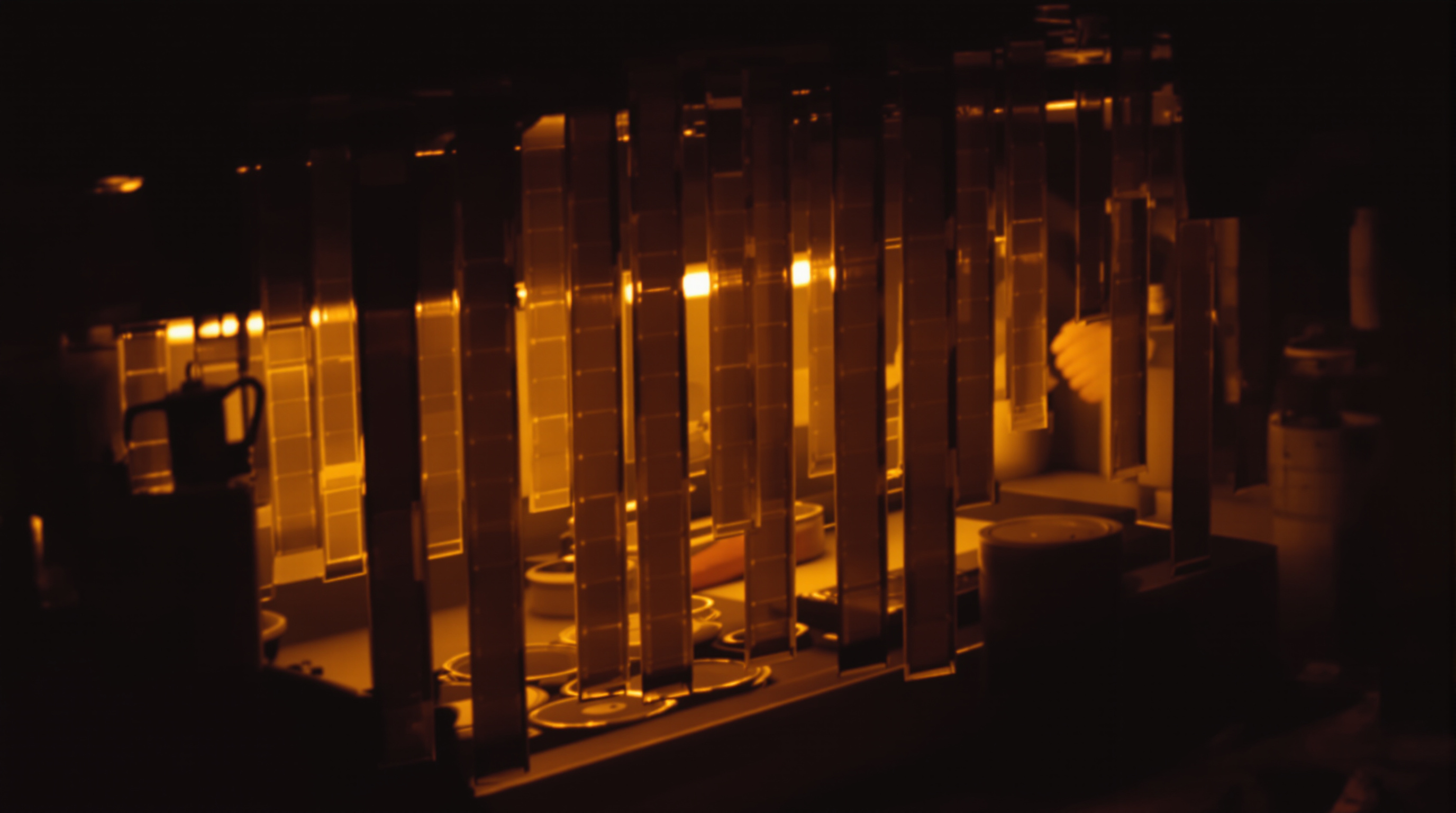The Timeless Art of Analog Photography
T.K. Broecker / 1 October 2025

Analog Photography in a Digital Age
In an age dominated by digital technology, analog photography stands as a testament to the enduring appeal of physical processes and tangible results. The distinct character of 35mm film, the methodical ritual of developing, and the almost alchemical magic of the darkroom continue to captivate photographers worldwide. This resurgence isn't merely nostalgia—it reflects a deeper appreciation for a deliberate, hands-on approach that yields aesthetic qualities impossible to fully replicate digitally.
The Enduring Appeal of 35mm Film
Introduced by Oskar Barnack for Leica cameras in the early 20th century, the 35mm format revolutionized photography with a portable, versatile medium embraced by amateurs and professionals alike. It remains the most widely used analog format thanks to several compelling characteristics. For a concise history of materials and processes, see the George Eastman Museum’s guide to photographic processes.
Film Stocks & Aesthetics
Each stock carries a signature look born of chemistry—not presets. Think Kodak Portra’s creamy skin tones, Fujifilm Velvia’s saturated color, or Ilford HP5’s classic grain.
- Tonal range: nuanced highlights and shadows
- Color rendition: stock-specific palettes
- Grain structure: adds organic texture and mood
Exposure Latitude
Negative films are forgiving—often tolerating generous overexposure while retaining highlight detail. This flexibility helps smooth out minor metering errors. Explore Kodak’s pro films overview for latitude notes across stocks on the Kodak Professional Film page.
- Buffer against errors: retains detail across stops
- Consistent look: smooth roll-to-roll tonality
Resolution & Detail
Fine-grained films like Kodak Ektar 100 or T-MAX 100 can deliver striking clarity when paired with quality lenses and careful technique.
- High sharpness: crisp edges, fine micro-contrast
- Scalable output: excellent for high-quality scans
Tangibility
Film creates physical negatives—durable artifacts that live beyond software and format shifts. For long-term care, the Library of Congress outlines best practices for preserving photographs and film.
- Future-proof: no decoding software needed
- Archivable: long-term storage & revisiting
The Chemistry & Process of Film Development
Development turns latent exposures into visible negatives via controlled chemical reactions—balancing precision with creative intent. New to this? ILFORD’s “Processing Your First Film” is an approachable primer: read the guide.
Core Steps
- Chemical preparation: mix developer, stop, and fixer to spec
- Temperature control: maintain ~68°F / 20°C
- Agitation: consistent patterns for even development
- Timing: follow precise intervals per chemistry/film
Developer Choices
- Rodinal: pronounced grain, excellent sharpness (ADOX Rodinal)
- Kodak D-76: finer grain, balanced tonality (D-76 datasheet PDF)
- Push processing: longer times for higher contrast & grain (ILFORD push-processing basics)
The Darkroom Experience
The darkroom is where negatives become prints through a choreography of light, chemistry, and judgment—each print a unique interpretation. For multigrade controls, see ILFORD’s overview of making your first darkroom prints.
Basic Setup
- Enlarger to project the negative
- Trays for developer, stop, fixer
- Safelight to protect photo paper
- Wash & drying for archival permanence
Creative Controls
- Dodging & burning: local exposure shaping
- Split filtering: precise contrast via multigrade papers
- Toning: selenium/sepia for longevity and tone shifts
Each darkroom print is the sum of many small choices; exact duplicates are rare—lending every print the aura of an original artwork.
The Digital–Analog Relationship
Hybrid Workflows
Scanning negatives preserves film’s signature look while enabling digital organization, editing, and sharing—best of both worlds. For digitization strategy and preservation planning, see the Digital Preservation Coalition’s section on audiovisual media.
Simulation vs. Film
Film simulations approximate stock aesthetics, but cannot fully mimic silver halide behavior or the creative unpredictability of chemical processes. For fine-art output perspectives, visit our sister studio’s insights at Iris Pro Imaging.
Conclusion
Analog photography’s resurgence is more than nostalgia—it’s a conscious embrace of presence, patience, and craft. From the distinctive character of 35mm film to the precision of development and the expressive power of the darkroom, film offers a counterbalance to digital immediacy.
Looking for practical “how-to” guides on scanning, restoration, and archival care? Visit our hub at The Print Refinery – Louisville East Blog, and browse more film notes on the Fulltone Photo blog.